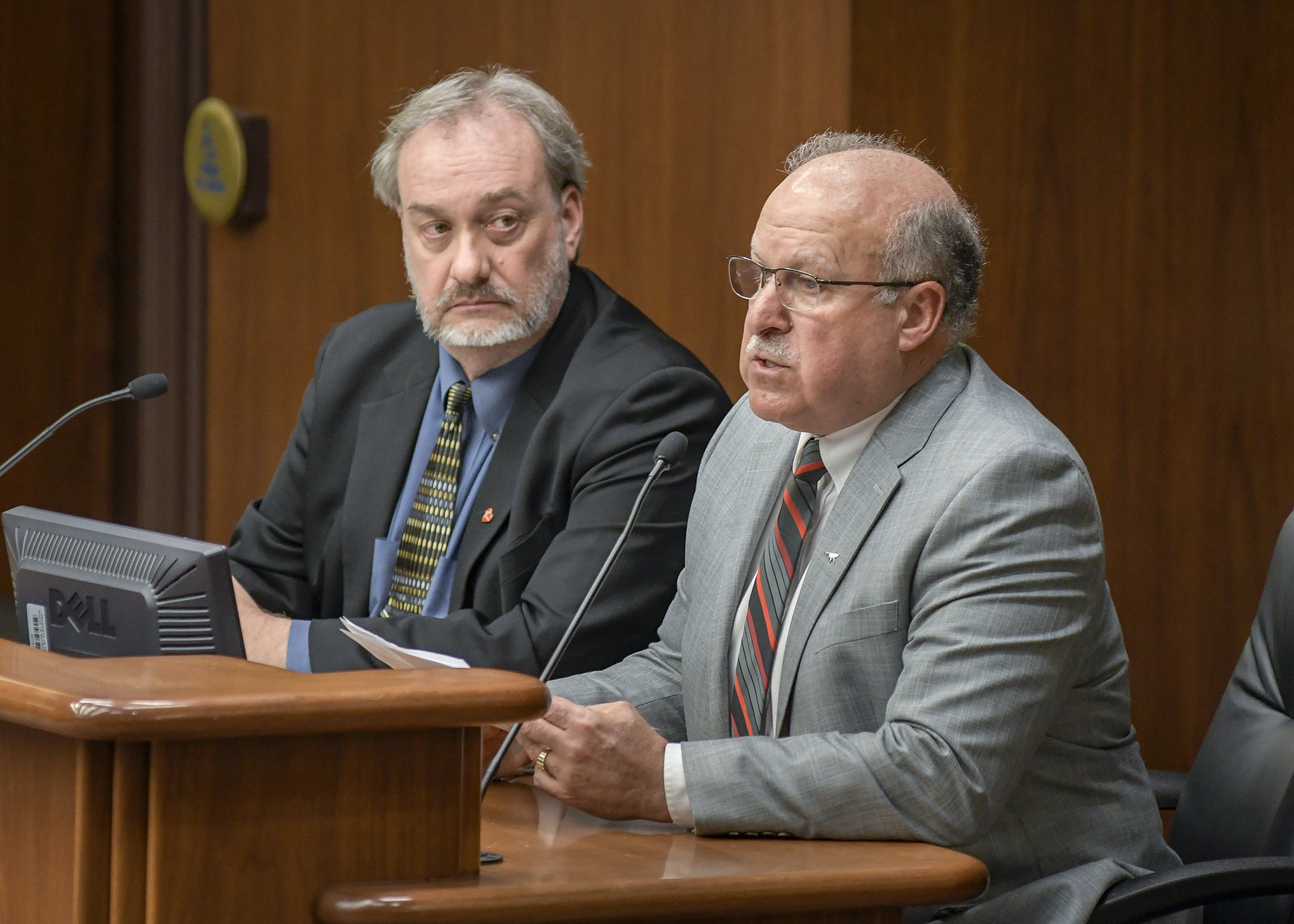Additional money proposed for chronic wasting disease response

With the recent release of Gov. Tim Walz’ budget recommendations, the House Environment and Natural Resources Finance Division laid over a bill Thursday to increase funding for the state’s response to chronic wasting disease.
Sponsored by Rep. Rick Hansen (DFL-South St. Paul), HF850, as amended, would appropriate $2.41 million in Fiscal Year 2020 and $2.16 million in Fiscal Year 2021 from the General Fund for disease surveillance and response. It would also appropriate $908,000 in each fiscal year from the Game and Fish Fund for deer management research on fawn survival, deer movement and dispersal, and deer locations in the effort to better inform disease response efforts.
A second approved amendment would appropriate $1.8 million for the University of Minnesota to develop a chronic wasting disease diagnostic test that can be deployed in the field and provide quick results.
The bill, which has no Senate companion, was held over for possible omnibus bill inclusion.
A dead wild deer which tested positive for the fatal neurological disease was discovered about half a mile from a disease-positive cervid farm in Crow Wing County on Jan. 23. This was the first positive wild deer found in Minnesota’s northern counties.
“Are we to the point now where we can say we know that this animal was infected by an animal in this location or are there other environmental factors?” said Rep. Josh Heintzeman (R-Nisswa). “… Do we as legislators need to be cautious when we suggest there is a direct connection?”
Lou Cornicelli, the DNR’s wildlife research manager, said it is “likely” the infection between the wild and farmed deer in that county are linked. But scientists are hesitant to apply absolutes because there is not yet a reliable method for string typing (a form of microbial forensic analysis) the prion-spread disease to connect specific infections.
“The proximity of a clinically found dead deer so close to the facility… [likely] is more associated with the data we have collected,” Cornicelli said.
Related Articles
Search Session Daily
Advanced Search OptionsPriority Dailies
Ways and Means Committee OKs proposed $512 million supplemental budget on party-line vote
By Mike Cook Meeting more needs or fiscal irresponsibility is one way to sum up the differences among the two parties on a supplemental spending package a year after a $72 billion state budg...
Meeting more needs or fiscal irresponsibility is one way to sum up the differences among the two parties on a supplemental spending package a year after a $72 billion state budg...
Minnesota’s projected budget surplus balloons to $3.7 billion, but fiscal pressure still looms
By Rob Hubbard Just as Minnesota has experienced a warmer winter than usual, so has the state’s budget outlook warmed over the past few months.
On Thursday, Minnesota Management and Budget...
Just as Minnesota has experienced a warmer winter than usual, so has the state’s budget outlook warmed over the past few months.
On Thursday, Minnesota Management and Budget...